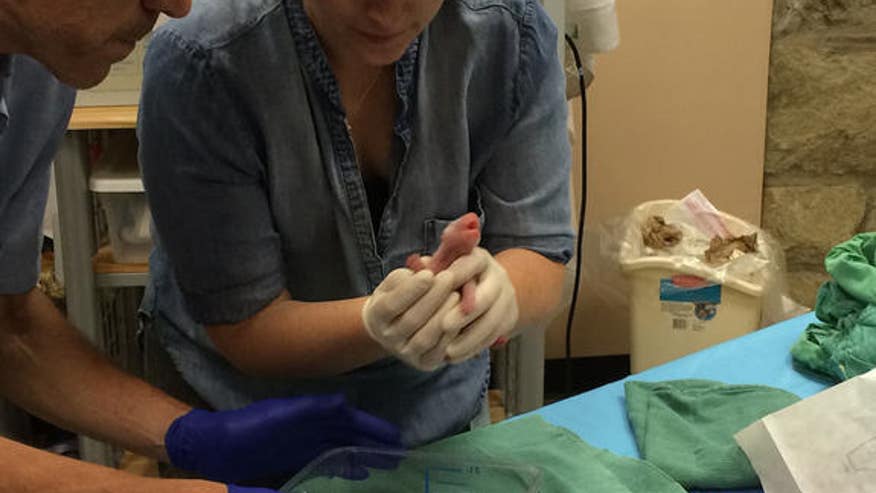The little panda was cold, low energy and having trouble breathing before its heart stopped beating. But the zoo baby left an indelible mark on its caretakers and admirers before it died, just days after being born to mother Mei Xiang, along with its brother. During its short life, the twin rode atop a lacrosse stick, snuggled with its mother and fed from a bottle, the last of which may have led to its demise.
The final necropsy results aren't complete, but the butter-stick-size panda likely died when fluid got into its lungs and caused inflammation, a condition called aspiration pneumonia. Veterinarians are unsure whether the cub got the condition during a bottle-feeding blunder or from formula it regurgitated, said Dr. Donald Neiffer, the chief veterinarian at Smithsonian's National Zoo.
"Whether or not the baby aspirated some of that [regurgitated] material or whether he aspirated material earlier in the day, we don't know, and we will never know," Neiffer told Live Science. [See Photos of Mei Xiang's New Twin Panda Cubs]
Express delivery
The pink and fuzzy cubs are part of a delicate plan, orchestrated on an international level, to preserve the giant panda species and, one day, introduce captive-bred pandas back into the wild. Just 1,864 giant pandas (Ailuropoda melanoleuca) exist in the wild, according to a 2015 panda census. An additional 395 of the roly-poly fur balls live in breeding centers and zoos around the world, said Devin Murphy, a spokesperson for Smithsonian's National Zoo.
Wild panda numbers increased by about 17 percent in the past decade, according to the 2015 census. American zoos are doing their part to breed and raise the animals, all on loan from China. Right now, there are 13 giant pandas in U.S. zoos, including San Diego Zoo, Memphis Zoo, Zoo Atlanta and the National Zoo.
The new twins were born to Mei Xiang (may-SHONG), the star mother at the National Zoo. Mei Xiang, whose name means "beautiful fragrance," has three surviving offspring, including Tai Shan (born in 2005), who now lives in China; Bao Bao (born in 2013), who lives at the National Zoo; and the surviving panda twin, which will be named 100 days after its birth.
 11:45 م
11:45 م
 Unknown
Unknown


 Posted in:
Posted in: 



0 التعليقات:
إرسال تعليق